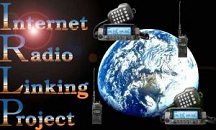|
|
IRLP Guidelines FAQ
|
|
IRLP - Keeping the Radio in Amateur Radio |
Can I access IRLP from a computer?
All IRLP traffic must originate from a locally received RF signal. This is the original principle design criteria of the IRLP system. This is due to third party regulations in some countries where IRLP is used that require that the originating voice signal must be from another amateur. It prevents non-amateur operators from transmitting over amateur frequencies. It also promotes the use of radio in Amateur Radio, hence our motto "Keeping the Radio in Amateur Radio".
Crosslinking is common. Can I configure an IRLP node to allow a non-IRLP VoIP system access other IRLP Nodes?
Any crosslink traffic into IRLP must not masquerade behind another IRLP node. In other words, an IRLP node that allows other VoIP systems to access it must not allow users from the other VoIP systems to dial into another IRLP node at the same time. As well - any crosslinks between networks must be voluntarily dialed into by all IRLP participants. In other words, all IRLP participants in the crosslink must dial into the crosslink. The participants can not be remotely called into the crosslink.
Can I design, write and implement custom code to add features to my IRLP Node?
This is one of the powers of IRLP as there have been many enhancements that had roots from users. However any non-IRLP software must not cause problems to any IRLP node, IRLP reflector, or IRLP server.
I know security encryption keys are required. Can anyone request these authentication keys?
IRLP PGP keys are only assigned to users that support IRLP, either by purchasing IRLP hardware or by making a donation to the project.
Donations need not be financial, but should benefit the network as a whole, not just a small group of users.
IRLP systems authenticate using a public/private key pair. This pair of keys allows a secure method of determining the identity of a node you are calling. These keys are registered with the IRLP servers, and without the keys, there is no communication between two IRLP nodes.
If a node is setup in a way that intentionally ignores the guidelines, or if a PGP key is determined to be obtained through fraudulent means, the PGP key will be removed, which will remove your IRLP node from the system. This prevents non-compliant systems from accessing the IRLP system.
Here are some scenarios..
Scenario Example - If there are a series of nodes
that are maintained as a separate "mini-network" through a reflector or
other bridging system, those nodes can run in any way you want, as long as
your modifications do not affect other nodes in the IRLP system, and the
intentions of the mini-network are known. An example of this is a system
where a published reflector channel supports Echolink, asterisk, and IRLP.
As long as non-participating nodes can not be remotely and involuntarily
dialed into the system, there is no breach of the guidelines.
Scenario Example - A large net is being run on an IRLP reflector for
the Space Shuttle launch. An IRLP node (not the conference reflector) sets
up a system, using specialized software, which allows people from Echolink
to dial in and talk on the net. This is an example of a crosslink, and is a
breach of the guidelines.
Footnote - The IRLP system is supported by volunteers. Any problems
that come about because of installing additional software to your node are
difficult for the volunteers to support. Volunteers will help out where they
can, but they can not help out in most cases.
Also, volunteers contribute their time and services with
the expectation that the nodes they are assisting are not closed to the rest
of the network.
|
Enjoy IRLP and please "Pass the Word" If left menu bar is not visible, click here |
||
|
last
updated
May 23, 2023 |
||
